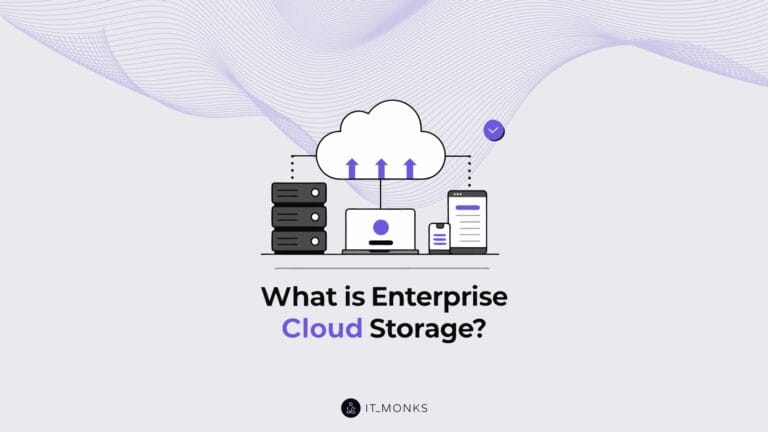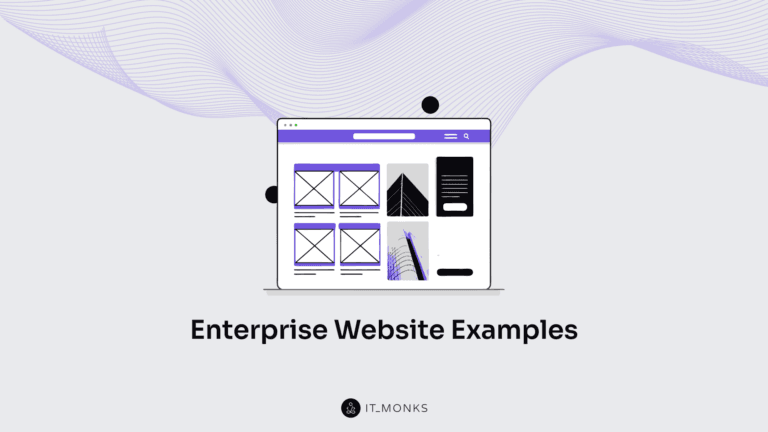Create the Best Content Strategy for Ecommerce Website
Table of Contents

Creating a content strategy for an ecommerce website is not merely about writing text; it’s a comprehensive, systematic approach that requires extensive planning, coordination, and ongoing efforts. A successful content strategy ensures that every piece of ecommerce content aligns with your business’s overarching goals, driving traffic, engaging customers, and increasing conversions. How do you create a content strategy for an ecommerce website that aligns with your company’s objective and SEO goals and helps you increase conversions? Let’s explore.
Understanding Your Target Audience
A deep understanding of your target audience is the cornerstone of a successful content strategy for ecommerce. Whenever working on location-based content in WordPress, you may miss the mark without knowing who your customers are, what they need, and how they interact with your brand. Therefore, thorough audience research and the creation of detailed buyer personas are crucial steps in developing a strategy that resonates with your customers and drives results.
Audience research is vital because it helps you to:
- Identify Customer Needs: By understanding the specific needs and pain points of your audience, you can create content that addresses their problems, answers their questions, and provides solutions they are actively seeking.
- Tailor Your Messaging: Different audience segments may respond to different types of messaging. Research helps you craft content that speaks directly to the various demographics within your target market, increasing the relevance and effectiveness of your communication.
- Optimize User Experience: Knowing how your audience navigates your website, what content they engage with, and what drives them to purchase allows you to optimize the user experience. This can lead to higher engagement, longer time spent on your site, and increased conversions.
Buyer personas are semi-fictional representations of your ideal customers based on real data and insights gathered through research. Creating detailed buyer personas allows you to:
- Personalize Content: Once you have a clear picture of your audience, you can create highly personalized content that speaks directly to their interests, behaviors, and concerns.
- Focus Your Efforts: Personas help you focus your website content strategies on the most valuable segments of your audience, ensuring that your efforts are targeted and effective.
- Improve Customer Relationships: By understanding your customers deeper, you can build stronger, more meaningful relationships that foster loyalty and encourage repeat business.
Need content that speaks to your audience?
To create accurate buyer personas and understand your audience, you need to gather data from various sources:
- Analytics Tools: Google Analytics is one of the best ecommerce tools to track user behavior on your website. This includes what pages they visit, how long they stay, what content they engage with, and where they drop off in the purchase process.
- Surveys and Feedback: Directly ask your customers for their opinions through surveys, feedback forms, and interviews. This qualitative data provides insights into their preferences, challenges, and expectations.
- Social Media Listening: Monitor social media platforms to see what your audience says about your brand, competitors, and industry trends. This can reveal valuable insights into their preferences and pain points.
- Customer Support Interactions: Analyze customer support interactions to identify common questions, issues, and complaints. This information can help you create content that addresses these concerns and improves the overall customer experience.
- Purchase History and CRM Data: Review your CRM data to understand buying patterns, preferences, and customer lifetime value. This will help you identify the types of content that are most likely to influence purchasing decisions.
Content Types for Ecommerce

A successful content strategy for an ecommerce website involves various types of content, each playing a distinct role in the customer journey. From attracting potential customers to converting them into loyal buyers, your content should be diverse, engaging, and strategically optimized to meet different needs at different stages. Below are some of the most important content types for ecommerce content marketing and how they can contribute to your overall business goals.
Product Descriptions
Product descriptions are the backbone of the product content creation for an ecommerce website. They are the primary way to communicate the value of your products to potential customers. SEO-optimized and persuasive product descriptions are essential for several reasons:
- Search Engine Visibility: By incorporating relevant keywords into your product descriptions, you can improve your search engine rankings, making it easier for potential customers to find your products.
- Conversion Rate Optimization: A well-written product description goes beyond just listing features; it highlights the benefits and solves the customer’s problem, making it more likely that they will make a purchase.
- Brand Voice and Consistency: Consistent and engaging product descriptions help reinforce your brand’s voice and ensure customers have a cohesive experience across your site.
In one of our previously published articles, we discussed how to optimize your product pages for more sales. Check it out for more insights.
Blog Posts
Blog posts are a powerful tool for engaging your audience and covering their informational needs. They help you reach potential customers early in the buying process by providing valuable content that answers their questions and builds trust. Here are a few types of blog posts that can add value to your ecommerce strategy:
- How-To Guides: These posts offer practical advice and step-by-step instructions, positioning your brand as a helpful resource. For example, a guide on “How to Style a Summer Wardrobe” can attract users looking for fashion advice, leading them to explore your clothing products.
- Product Reviews: Writing detailed reviews of your products or comparing them with competitors can help potential customers make informed purchasing decisions.
- Industry News and Trends: Keeping your audience updated with the latest trends in your industry can establish your brand as a thought leader, encouraging customers to trust your expertise.
User-Generated Content
User-generated content (UGC) is any form created by your customers rather than your brand. This can include reviews, testimonials, social media posts, and customer stories. UGC is incredibly valuable for ecommerce businesses for several reasons:
- Social Proof: Positive reviews and testimonials show potential customers that others have had a good experience with your products, which can significantly influence purchasing decisions.
- Authenticity and Trust: UGC adds authenticity to your brand, as customers tend to trust the opinions of their peers more than branded content.
- Engagement and Community Building: Encouraging customers to share their experiences and engage with your brand can help build a loyal community around your products.
Visual Content
Visual content plays a crucial role in enhancing the appeal of your products and making your website more engaging. High-quality images, videos, and infographics are particularly important for ecommerce because:
- Product Appeal: Clear, high-resolution images and videos allow customers to see the details of your products, which is essential for online shopping where they cannot physically touch or try the items.
- Customer Experience: Visual content helps break up text and makes your website more visually appealing, improving the overall user experience.
- Storytelling: Infographics and videos can tell a story about your brand or products, making complex information more digestible and engaging for customers.
Seeking expert UI/UX help?
Social Media Content
Social media has become a powerful platform for ecommerce businesses to reach and engage with their target audience. The growing importance of social media, especially platforms like Instagram and TikTok, cannot be overstated:
- Visual and Interactive Content: These platforms are ideal for sharing visually appealing content, such as product photos, behind-the-scenes videos, and user-generated content, which can capture the attention of potential customers.
- Direct Customer Engagement: Social media allows for direct customer interaction, enabling you to respond to queries, share updates, and build a community around your brand.
- Influencer Marketing: Collaborating with influencers on platforms like Instagram and TikTok can help you reach a wider audience and build credibility with potential customers.
Email Marketing Content
WooCommerce email marketing remains one of the most effective channels for ecommerce businesses to engage with their audience and drive sales. Key types of email content include:
- Newsletters: Regular newsletters inform customers about new products, upcoming sales, and other brand updates. They help maintain a connection with your audience and encourage repeat visits to your site.
- Promotional Offers: Special offers and discounts delivered directly to your customers’ inboxes can drive immediate sales and increase customer loyalty.
- Personalized Emails: Personalization in email marketing, such as recommending products based on past purchases or sending birthday discounts, can significantly increase customer lifetime value (LTV) by making customers feel valued and understood.
Content Creation Process

Ecommerce content management involves a series of well-planned steps that ensure your content is high-quality, aligned with your brand’s goals, and resonates with your target audience. Each step, from brainstorming to editing, is crucial in delivering content that drives engagement, builds trust, and converts visitors into customers. Maintaining a consistent brand voice and style throughout content creation for ecommerce is essential for establishing a recognizable and trustworthy brand identity.
That said, let’s consider major steps on how to start content creation for ecommerce, including brainstorming, creating and editing content.
Step 1. Brainstorming
- Identify Content Goals: Define what you want to achieve with your content. Whether it’s increasing traffic, boosting conversions, or building brand awareness, having clear goals will guide your brainstorming process.
- Audience Research: Revisit your buyer personas and audience research to ensure that the content ideas you generate are relevant and address the needs and interests of your target audience.
- Content Ideas Generation: Collaborate with your team to generate a list of potential content topics. Use keyword research, competitor analysis, and social listening to identify trending topics and gaps in your current content strategy.
- Prioritization: Once you have a list of ideas, prioritize them based on their alignment with your goals, potential impact, and the resources required to create them.
Step 2. Creating Content
- Outline and Structure: Before starting the writing process, create a detailed outline for each piece of content. This will help organize your thoughts, ensure logical flow, and make the writing process more efficient.
- Drafting: Begin writing your content based on the outline. Focus on creating engaging, informative, and valuable content that addresses your audience’s specific needs. During this stage, don’t worry too much about perfection—just get your ideas down on paper.
- Incorporating SEO: While drafting, incorporate relevant keywords naturally into the content. Pay attention to SEO best practices, such as using headings, meta descriptions, and internal links, to enhance the content’s search engine visibility.
- Visual Elements: Integrate visual content, such as images, infographics, and videos, to complement the text and make the content more engaging. Visuals can help break up large blocks of text and make the content more accessible to readers.
Step 3. Content Editing
- Content Review: After the initial draft is complete, review the content for clarity, accuracy, and consistency. Ensure the information is correct, the messaging is clear, and the content flows logically.
- Language and Tone: Pay attention to the language and tone used in the content. It should align with your brand voice and be appropriate for your target audience. Avoid jargon and complex language that might confuse readers.
- Proofreading: Check for grammatical errors, spelling mistakes, and typos. A well-edited piece of content reflects professionalism and attention to detail, essential for building trust with your audience.
- Final Touches: Before publishing, ensure that all visual elements are appropriately formatted, all links are working, and the overall design of the content is visually appealing. This final step is crucial for ensuring your content is polished and ready for public consumption.
SEO Best Practices for Ecommerce Content

Search engine optimization (SEO) is critical to a successful ecommerce content strategy. By following SEO best practices, you can ensure that your content is easily discoverable by search engines, increasing visibility, driving traffic, and boosting conversions. For ecommerce websites, SEO involves several key practices, including effective keyword research, optimizing product and category pages, and paying attention to meta descriptions, alt text, and internal linking. Here’s how to implement these practices effectively.
Seeking expert SEO services?
Keyword Research and Integration for Ecommerce Pages
Keyword research is the foundation of any SEO strategy. For ecommerce websites, identifying the right keywords ensures that your products and content are visible to potential customers when they search online.
- Identifying Relevant Keywords: Research keywords relevant to your products, categories, and overall business. Use tools like Google Keyword Planner, Ahrefs, or SEMrush to find keywords with high search volume and low competition. Focus on both short-tail keywords (e.g., “running shoes”) and long-tail keywords (e.g., “best running shoes for flat feet”) to capture a broad audience.
- Understanding User Intent: Understanding the intent behind the keywords is important. Are users looking to buy, learn more, or compare products? Tailor your content to match the intent. For example, product pages should target keywords with transactional intent (e.g., “buy running shoes online”), while blog posts can target informational intent (e.g., “how to choose running shoes”).
- Keyword Integration: Once you’ve identified your target keywords, integrate them naturally into your content. Avoid keyword stuffing, which can harm your rankings. Instead, use keywords in strategic locations such as product titles, headings, product descriptions, and throughout the body of your content. Also, ensure that keywords appear in the URL, meta tags, and image alt text.
Optimizing Product Pages, Category Pages, and Blog Content for Search Engines
Optimizing your ecommerce pages is essential for improving their visibility in search engine results. Each type of page requires a different optimization approach.
Product Pages:
- Title Tags and Headings: Use your primary keyword in the product title tag and H1 heading. Ensure the title is descriptive and compelling, as it appears in search engine results and can influence click-through rates.
- Product Descriptions: Write unique, detailed product descriptions that incorporate relevant keywords. Highlight the product’s features, benefits, and unique selling points. Ensure the content is engaging and informative, providing all the necessary information a potential buyer might need.
- Rich Snippets: Implement rich snippets (structured data) to provide additional information in search results, such as product price, availability, and reviews. This can make your listing stand out and improve click-through rates.
Category Pages:
- Category Descriptions: Add a brief, keyword-rich description at the top or bottom of your category pages. This helps search engines understand the page’s content and context, improving its chances of ranking.
- Internal Linking: Within the category description, link to related product pages to improve navigation and distribute link equity across your site.
- Pagination: Ensure that pagination on category pages is SEO-friendly. Use rel=”next” and rel=”prev” tags to help search engines understand the relationship between paginated pages.
Blog Content:
- Keyword Optimization: For blog posts, focus on targeting long-tail keywords that address specific customer questions or problems. Use these keywords in the title, headings, and throughout the content.
- Content Quality: High-quality, informative content is key to ranking well. Blog posts should be well-researched, provide value to the reader, and be engaging to keep visitors on your site longer.
- Internal and External Links: To keep readers engaged with your site, include internal links to related products or other relevant blog posts. Also, consider linking to authoritative external sources to boost the credibility of your content.
Content Distribution Channels

Once you’ve created high-quality content, the next step is ensuring it reaches the right audience. Content distribution is a critical part of your content strategy, involving promoting your content across various channels to maximize its reach and impact. A multichannel distribution approach, leveraging social media, email marketing, and paid advertising, ensures your content is visible to a broader and more diverse audience.
Strategies for Promoting Content through Social Media, Email, and Paid Advertising
- Social Media. Choose the right social media platforms based on where your target audience spends their time. For example, Instagram and Pinterest are ideal for visually-driven content, while LinkedIn works well for B2B content. Tailor your content to fit the unique style and audience of each platform. For instance, short, engaging videos work well on TikTok, while detailed posts or infographics might perform better on Facebook or LinkedIn.
- Email Marketing. Segment your email list based on customer behavior, demographics, and past interactions to send more personalized and relevant content. For example, you could send product recommendations based on previous purchases or special offers to high-value customers. Use email to distribute various content types, such as newsletters, product updates, and exclusive content. Include strong calls-to-action (CTAs) encouraging recipients to visit your website or engage with your brand.
- Paid Advertising. Pay-per-click (PPC) advertising on platforms like Google Ads or social media can boost the visibility of your content. Target ads to specific keywords, demographics, or behaviors to reach the right audience at the right time. Promote your content through paid social media ads to extend your reach beyond your organic audience. Use precise targeting options to ensure your ads are seen by users most likely interested in your content.
A multichannel distribution strategy is essential for maximizing the reach and effectiveness of your content. Different users interact with different platforms, so relying on a single channel limits your audience. By distributing content across multiple channels, you ensure it reaches a wider variety of users, increasing the chances of engagement and conversion.
Measuring and Analyzing Content Performance
To ensure that your content strategy is effective, measuring and analyzing its performance regularly is crucial. By tracking key metrics and using analytical tools, you can gain insights into what’s working, what isn’t, and where there’s room for improvement. This data-driven approach allows you to continuously refine your strategy and maximize the impact of your content.
Key Metrics to Track (Traffic, Conversions, Engagement Rates, etc.)
- Traffic: Monitor the traffic your content drives to your website. Analyze which channels generate the most visitors and how these users interact with your site.
- Conversions: Track conversion rates to see how well your content turns visitors into customers. This could include measuring sales, sign-ups, or users’ desired actions after engaging with your content.
- Engagement Rates: Assess how users interact with your content through metrics like time on page, bounce rate, social shares, and comments. High engagement indicates that your content is resonating with your audience.
- Click-Through Rate (CTR): For email marketing and paid advertising, the CTR measures how effectively your content drives users to take action. A high CTR indicates your content is compelling and relevant to your audience.
- Customer Retention: Track repeat visits and purchases to evaluate how well your content contributes to customer loyalty and long-term relationships.
Tools and Methods for Analyzing Content Effectiveness
- Google Analytics is a fundamental tool for tracking website traffic, user behavior, and conversions. Use it to monitor how users interact with your content and where they come from.
- Social Media Analytics: Most social media platforms offer built-in analytics tools that provide insights into post performance, audience demographics, and engagement. Use these to refine your social media content strategy.
- Email Marketing Software: Tools like Mailchimp or HubSpot offer detailed analytics on email campaigns, including open rates, CTRs, and conversion rates. These insights help you optimize your email content and targeting.
- A/B Testing: Continuously test different content variations to see which performs better. This could include testing different headlines, images, CTAs, or content formats. Use the results to inform future content creation for ecommerce.
Want to turn content into revenue?
Strategies for Continuous Improvement Based on Performance Data
- Regular Reviews: Schedule regular content performance reviews to assess what’s working and needs improvement. Use these insights to adjust your strategy and content calendar.
- Feedback Loops: Create feedback loops by soliciting input from customers, team members, and stakeholders. This can provide qualitative insights that complement your quantitative data.
- Iterative Content Development: Based on performance data, refine and update existing content to improve its effectiveness. This could involve updating blog posts with new information, optimizing product descriptions, or adjusting the targeting of paid ads.
- Adaptation and Experimentation: Stay agile by experimenting with new content formats, distribution channels, and strategies. Use data-driven insights to guide these experiments, allowing you to quickly adapt to changing market conditions and audience preferences.
Conclusion
Creating and executing a successful content strategy for an ecommerce website requires a holistic approach encompassing content creation, distribution, and performance analysis. It demands careful planning, promotion across multiple channels, and continuous measurement of impact to ensure your content not only attracts and engages your audience but also drives conversions and supports long-term business growth.
However, achieving this success requires the right skills and expertise. That’s where expert teams like IT Monks come in. We specialize not only in creating stunning web designs and speed-optimized web stores, but we can also help you optimize your website for SEO and assist in delivering compelling content strategies that align with your business goals. Need help? Contact us today to discuss your project and see how we can support your journey to ecommerce success.




